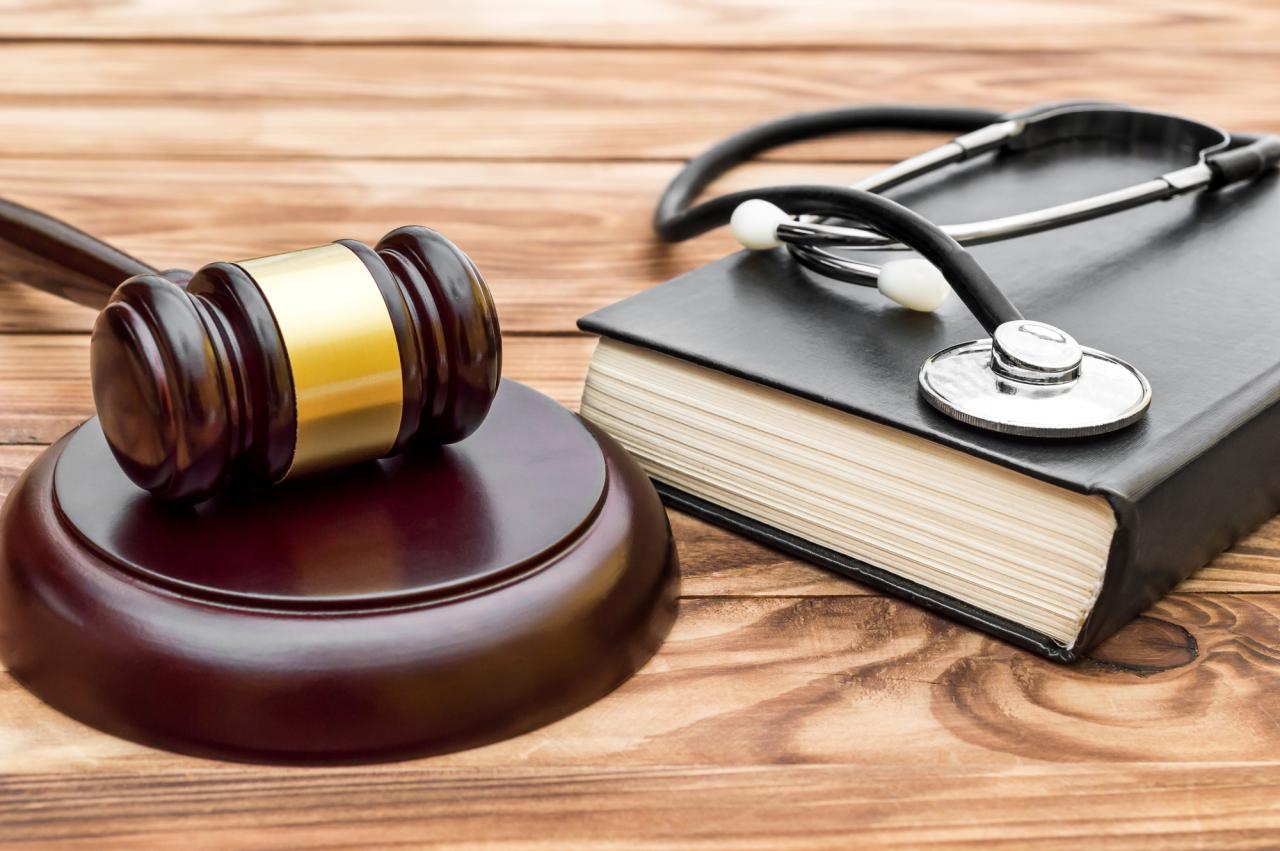
Legal Framework of Medical Malpractice
Medical malpractice occurs when a healthcare professional or institution breaches their duty of care to a patient, resulting in harm or injury. This breach can arise from negligence, recklessness, or intentional misconduct.
Common types of medical malpractice claims include:
- Misdiagnosis or delayed diagnosis
- Surgical errors
- Medication errors
- Lack of informed consent
li>Failure to monitor a patient’s condition
To establish a medical malpractice case, the plaintiff must prove the following legal elements:
- The healthcare professional or institution owed a duty of care to the patient.
- The healthcare professional or institution breached their duty of care.
- The breach of duty caused the patient’s injuries.
- The patient suffered damages as a result of the injuries.
Attorney’s Role in Medical Malpractice Cases

In medical malpractice cases, attorneys play a crucial role in representing the interests of both plaintiffs (injured parties) and defendants (healthcare providers).
Responsibilities of an Attorney Representing a Plaintiff
An attorney representing a plaintiff in a medical malpractice case has the following responsibilities:
- Investigating the case to gather evidence of medical negligence
- Filing a lawsuit and representing the plaintiff in court
- Negotiating a settlement or pursuing a trial
- Protecting the plaintiff’s rights and ensuring they receive fair compensation
Responsibilities of an Attorney Representing a Defendant
An attorney representing a defendant in a medical malpractice case has the following responsibilities:
- Investigating the case to determine if there was medical negligence
- Filing a defense and representing the defendant in court
- Negotiating a settlement or defending the case at trial
- Protecting the defendant’s rights and ensuring they are not held liable for damages
Selecting an Attorney for a Medical Malpractice Case
When selecting an attorney for a medical malpractice case, it is important to consider the following factors:
- Experience in handling medical malpractice cases
- Success rate in obtaining favorable outcomes for clients
- Reputation for integrity and professionalism
- Fees and costs associated with the representation
Damages in Medical Malpractice Cases
Medical malpractice cases can result in various types of damages being awarded to the victim. These damages aim to compensate the victim for the losses and suffering caused by the negligent medical treatment.
Damages in medical malpractice cases are typically divided into two main categories: compensatory damages and punitive damages. Compensatory damages are awarded to reimburse the victim for actual losses, such as medical expenses, lost income, and pain and suffering. Punitive damages, on the other hand, are awarded to punish the negligent healthcare provider and deter similar conduct in the future.
Compensatory Damages
Compensatory damages in medical malpractice cases can include:
- Medical expenses: This includes all costs associated with the victim’s medical treatment, such as hospital stays, doctor’s visits, surgery, and rehabilitation.
- Lost income: The victim may be entitled to compensation for wages lost due to their inability to work as a result of the medical malpractice.
- Pain and suffering: This is a subjective measure of the victim’s physical and emotional pain and suffering caused by the malpractice.
- Loss of enjoyment of life: The victim may be compensated for the loss of their ability to engage in activities they once enjoyed due to the medical malpractice.
Calculating Damages
The calculation of damages in medical malpractice cases can be complex and involves various factors, including:
- The severity of the victim’s injuries
- The victim’s age and life expectancy
- The victim’s occupation and earning capacity
- The cost of future medical care
- The degree of the healthcare provider’s negligence
In some cases, economic damages, such as medical expenses and lost income, can be calculated using objective evidence, such as bills and pay stubs. However, non-economic damages, such as pain and suffering, are more subjective and require the jury to make a determination based on the evidence presented.
Factors Affecting Damages
The amount of damages awarded in medical malpractice cases can vary significantly depending on several factors, including:
- The jurisdiction in which the case is filed
- The statute of limitations applicable to the case
- The availability of insurance coverage
- The skill and experience of the victim’s attorney
It is important to note that damages in medical malpractice cases are not always awarded in full. The amount of damages awarded may be reduced or limited by factors such as the victim’s own negligence or the existence of a damage cap in the applicable jurisdiction.
Defenses to Medical Malpractice Claims
When faced with a medical malpractice claim, defendants often raise various defenses to protect themselves from liability. These defenses aim to refute the plaintiff’s allegations and establish legal reasons why the defendant should not be held responsible.
Contributory Negligence
Contributory negligence asserts that the plaintiff’s own actions contributed to their injuries. If the defendant can prove that the plaintiff failed to follow medical instructions, ignored warnings, or engaged in reckless behavior that exacerbated their condition, the court may reduce or eliminate the plaintiff’s damages.
Statute of Limitations
Every state has a statute of limitations for medical malpractice claims, which sets a time limit within which a lawsuit must be filed. If the plaintiff fails to file their claim within this period, the court will dismiss it, even if the claim is valid.
Lack of Informed Consent
Informed consent requires that a patient be fully informed about the risks and benefits of a medical procedure before consenting to it. If the defendant can show that the patient was not properly informed, the patient’s consent may be invalid, and the defendant may not be liable for any injuries resulting from the procedure.
Lack of Causation
The defendant may argue that their actions did not cause the plaintiff’s injuries. This defense requires the defendant to show that the plaintiff’s injuries would have occurred regardless of the defendant’s negligence.
Trial Process in Medical Malpractice Cases
A medical malpractice trial is a complex and challenging process. It requires a deep understanding of the law, medical science, and trial procedure. The following is a general overview of the steps involved in a medical malpractice trial:
Jury Selection
The first step in a medical malpractice trial is jury selection. The jury is responsible for deciding the facts of the case and awarding damages, if any. The attorneys for both sides will question potential jurors to determine if they are qualified to serve on the jury. The goal of jury selection is to select a jury that is fair and impartial.
Opening Statements
After the jury has been selected, the attorneys for both sides will deliver opening statements. The opening statements are an opportunity for the attorneys to present their case to the jury and to explain what they believe the evidence will show.
Presentation of Evidence
The next step in the trial is the presentation of evidence. The plaintiff’s attorney will present evidence to support their claim that the defendant was negligent and that their negligence caused the plaintiff’s injuries. The defendant’s attorney will present evidence to rebut the plaintiff’s claims.
Closing Arguments
After all of the evidence has been presented, the attorneys for both sides will deliver closing arguments. The closing arguments are an opportunity for the attorneys to summarize the evidence and to urge the jury to find in their favor.
Jury Deliberations
After the closing arguments, the jury will retire to deliberate. The jury will consider all of the evidence that has been presented and will attempt to reach a verdict. The jury must reach a unanimous verdict in order to find in favor of the plaintiff.
Verdict
If the jury finds in favor of the plaintiff, they will award damages. The damages can include compensation for the plaintiff’s medical expenses, lost wages, pain and suffering, and other damages.
Ethical Considerations in Medical Malpractice Cases

Medical malpractice cases present unique ethical challenges for attorneys. The attorney’s role is to zealously represent their client while maintaining professionalism and integrity.
Ethical obligations include:
- Maintaining client confidentiality
- Avoiding conflicts of interest
- Disclosing relevant information to the court
- Acting in good faith
Attorney’s Ethical Obligations
Attorneys have a duty to provide competent and ethical representation to their clients. This includes:
- Thoroughly investigating the case
- Explaining legal options to the client
- Providing zealous advocacy
Maintaining Professionalism and Integrity
Attorneys must maintain professionalism and integrity throughout the medical malpractice case. This includes:
- Treating all parties with respect
- Avoiding personal attacks
- Acting in a fair and ethical manner
Case Studies and Legal Precedents

Case studies and legal precedents play a crucial role in shaping the landscape of medical malpractice litigation. Notable cases have established legal principles that guide future cases and provide insights into the complexities of medical negligence.
The legal framework governing medical malpractice varies across jurisdictions, but common principles include the duty of care, breach of duty, causation, and damages. Statutes and case laws provide specific guidelines for determining liability and remedies in medical malpractice cases.
Notable Case Studies
- Helling v. Carey (1974): Established the “locality rule,” which held that medical professionals are held to the standard of care prevailing in their community.
- Tarasoff v. Regents of the University of California (1976): Imposed a duty on mental health professionals to warn potential victims of threats made by their patients.
- Roe v. Wade (1973): Legalized abortion, but also established the legal right of healthcare providers to refuse to perform abortions based on religious or moral objections.
Impact of Legal Precedents
Legal precedents set by notable cases have a profound impact on future medical malpractice litigation. They establish legal principles that courts are bound to follow, providing guidance and predictability in resolving similar cases.
For example, the locality rule in Helling v. Carey has been widely criticized for failing to account for advances in medical technology and the availability of specialists. However, it remains the standard in many jurisdictions, despite efforts to reform it.





